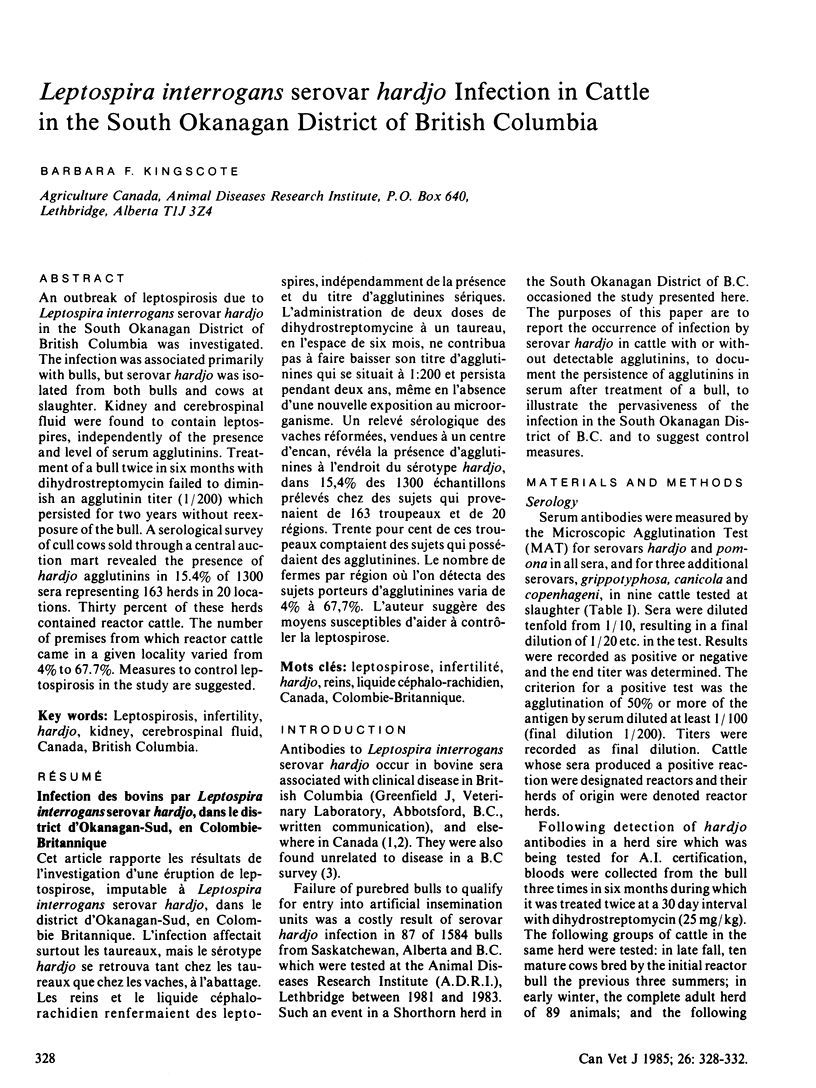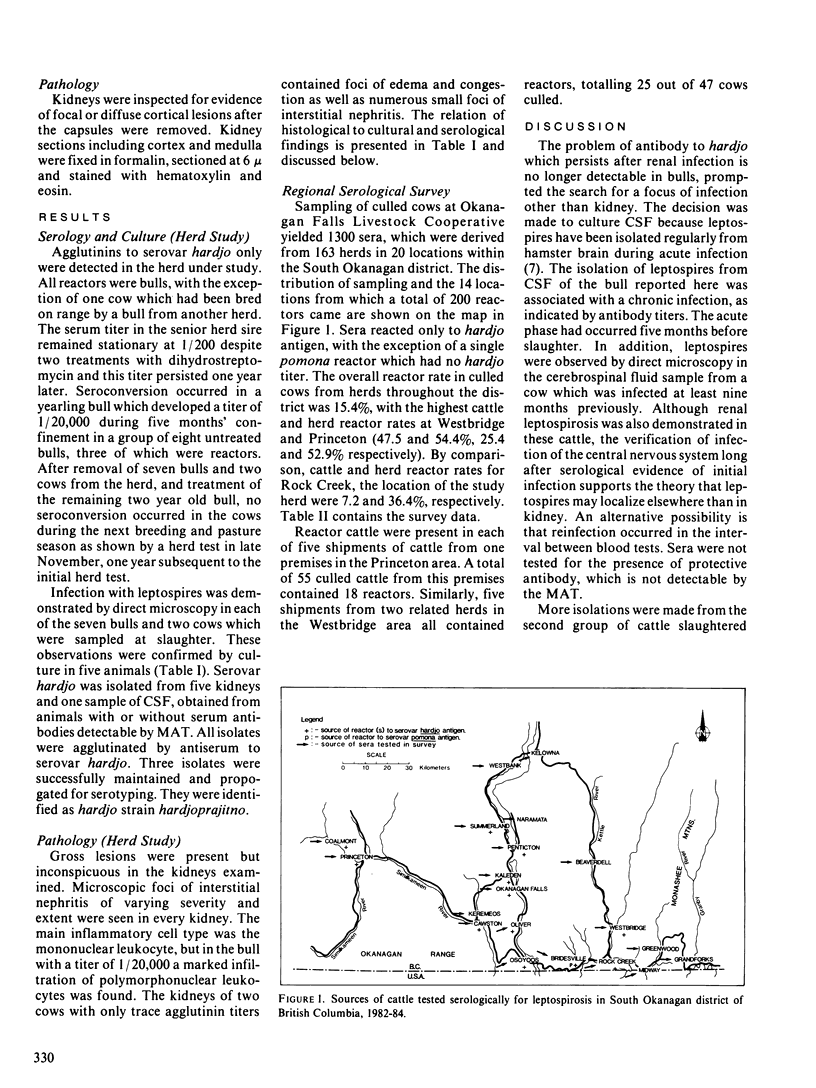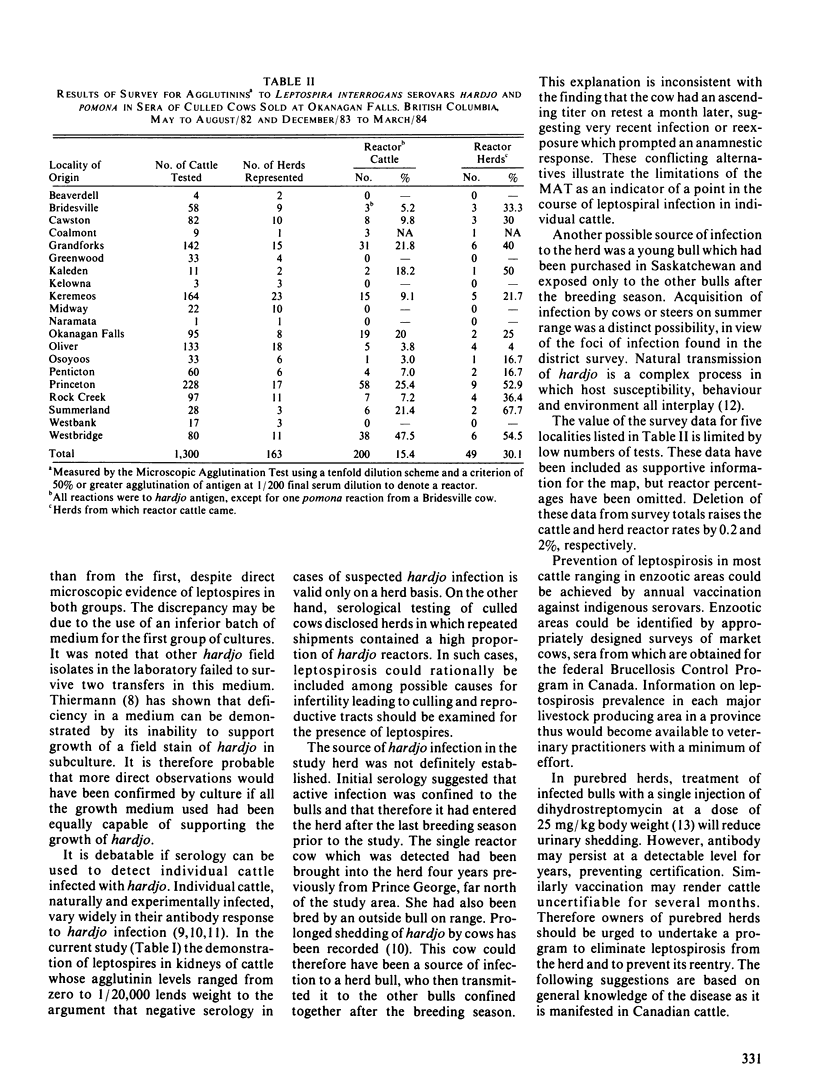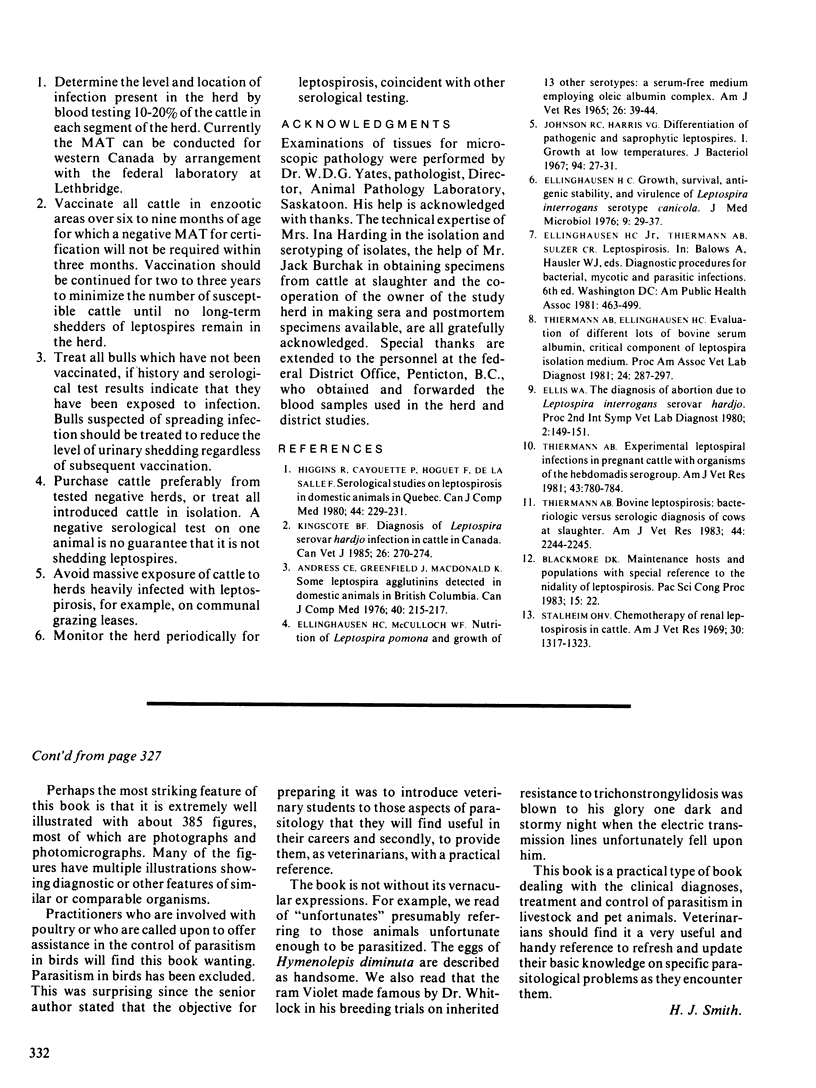Abstract
An outbreak of leptospirosis due to Leptospira interrogans serovar hardjo in the South Okanagan District of British Columbia was investigated. The infection was associated primarily with bulls, but serovar hardjo was isolated from both bulls and cows at slaughter. Kidney and cerebrospinal fluid were found to contain leptospires, independently of the presence and level of serum agglutinins. Treatment of a bull twice in six months with dihydrostreptomycin failed to diminish an agglutinin titer (1/200) which persisted for two years without reexposure of the bull. A serological survey of cull cows sold through a central auction mart revealed the presence of hardjo agglutinins in 15.4% of 1300 sera representing 163 herds in 20 locations. Thirty percent of these herds contained reactor cattle. The number of premises from which reactor cattle came in a given locality varied from 4% to 67.7%. Measures to control leptospirosis in the study are suggested.
Keywords: Leptospirosis, infertility, hardjo, kidney, cerebrospinal fluid, Canada, British Columbia
Full text
PDF




Selected References
These references are in PubMed. This may not be the complete list of references from this article.
- Andress C. E., Greenfield J., Macdonald K. Some leptospira agglutinins detected in domestic animals in British Columbia. Can J Comp Med. 1976 Apr;40(2):215–217. [PMC free article] [PubMed] [Google Scholar]
- ELLINGHAUSEN H. C., Jr, MCCULLOUGH W. G. NUTRITION OF LEPTOSPIRA POMONA AND GROWTH OF 13 OTHER SEROTYPES: A SERUM-FREE MEDIUM EMPLOYING OLEIC ALBUMIN COMPLEX. Am J Vet Res. 1965 Jan;26:39–44. [PubMed] [Google Scholar]
- Ellinghausen H. C., Painter G. M. Growth, survival, antigenic stability, and virulence of Leptospira interrogans serotype canicola. J Med Microbiol. 1976 Feb;9(1):29–37. doi: 10.1099/00222615-9-1-29. [DOI] [PubMed] [Google Scholar]
- Higgins R., Cayouette P., Hoquet F., De LaSalle F. Serological studies on leptospirosis in domestic animals in Quebec. Can J Comp Med. 1980 Apr;44(2):229–231. [PMC free article] [PubMed] [Google Scholar]
- Johnson R. C., Harris V. G. Differentiation of pathogenic and saprophytic letospires. I. Growth at low temperatures. J Bacteriol. 1967 Jul;94(1):27–31. doi: 10.1128/jb.94.1.27-31.1967. [DOI] [PMC free article] [PubMed] [Google Scholar]
- Kingscote B. F. Diagnosis of Leptospira serovar hardjo Infection in Cattle in Canada. Can Vet J. 1985 Sep;26(9):270–274. [PMC free article] [PubMed] [Google Scholar]
- Stalheim O. H. Chemotherapy of renal leptospirosis in cattle. Am J Vet Res. 1969 Aug;30(8):1317–1323. [PubMed] [Google Scholar]
- Thiermann A. B. Bovine leptospirosis: bacteriologic versus serologic diagnosis of cows at slaughter. Am J Vet Res. 1983 Dec;44(12):2244–2245. [PubMed] [Google Scholar]
- Thiermann A. B. Experimental leptospiral infections in pregnant cattle with organisms of the Hebdomadis serogroup. Am J Vet Res. 1982 May;43(5):780–784. [PubMed] [Google Scholar]


